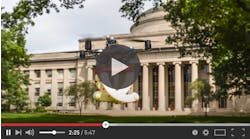After signing a five-year contract with NASA to support NASA's simulated Mars mission, Skypersonic has turned to a volcano in Italy to validate its software and hardware.
With a landscape similar to Mars, the Skypersonic team set up on Mt. Etna, an active volcano in Sicily, to demonstrate its technology for a 15-day duration.
“We look forward to the ultimate test when our technology will be used during NASA’s upcoming yearlong simulated Mars mission. We are confident of also passing this test. During the simulated Mars mission, four crew members living and working in a 1,700-square-foot module on Earth, called Mars Dune Alpha, will carry out a series of missions—including remotely guided exploration and collection of specimens from rugged terrain elsewhere on Earth, up to thousands of miles away.”
Skypersonic’s “Skycopter” drone can be piloted virtually anywhere, from virtually anywhere. Using Skypersonic’s Long Range Real-Time Remote Piloting System, the drone and rover on the active volcano in Italy were controlled by personnel in Houston, Texas, in real time.
Whereas most drones cannot be piloted without connecting to the GPS network, Skycopter uses technology that is able to control and track the drone in locations where GPS is not available.
“This was a grueling test that we passed with flying colors,” said Skypersonic CEO Giuseppe Santangelo.
The results of the successful test on Sicily’s active volcano—which included the collection of samples by the rover, an essential capability for Martian robotic exploration—were demonstrated to Italian media during a July press conference on Mt. Etna near the Catania Astrophysical Observatory.
On hand for the demonstration were Santangelo and Dr. Salvatore Caffo, executive volcanologist at Etna Park.
Once again, the pilot was in Houston. The project was a collaboration between Skypersonic, the University of Turin and Etna Park.













